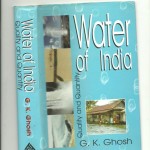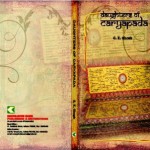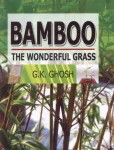Celebrate the World Day for Water 2010

> HOME a film by Yann Arthus-Bertrand <
> UMWELTBERATUNG Wien – Trinkwasser sparen <
In 1993 the United Nations General Assembly declared March 22 as World Day for Water (also known as World Water Day). This day was first formally proposed in Agenda 21 of the 1992 United Nations Conference on Environment and Development (UNCED) in Rio de Janeiro, Brazil. Observance began in 1993 and has grown significantly ever since.Read More: > HERE <
World Water Day is an international day of observance and action to draw attention to the plight of the more than 1 billion people world wide that lack access to clean, safe drinking water. Celebrated since 1993, World Water Day was designated in 1992 when the United Nations (UN) General Assembly passed a resolution. With each passing year, the observance has grown larger and stronger.
In many ways though, World Water Day is still a relatively unknown event. Even with the support of the UN and efforts by leading non-governmental organizations (NGOs) and committed individuals, World Water Day is today at a similar stage as Earth Day was in the early 1970’s – important but relatively unknown.
Beginning in 2005 this began to change. Ethos Water and leading NGOs began an effort to bring even greater attention to the world water crisis on World Water Day. Then in 2006 with the strong backing of the Starbucks Coffee Company and other leading corporate and non-profit allies, we began a major effort to establish March 22 as a day where everyone, regardless of their involvement in water issues, pauses to reflect on the impact of the world water crisis and takes small but meaningful ACTION to make a difference.
In 2009, the theme for World Water Day is „Shared Water – Shared Opportunities“. This year on World Water Day, we will call attention to the waters that cross borders and link us together. Special focus will be placed on transboundary waters. Nurturing the opportunities for cooperation in transboundary water management can help build mutual respect, understanding and trust among countries and promote peace, security and sustainable economic growth. The United Nations Educational, Scientific and Cultural Organization (UNESCO) leads the activities of the World Water Day 2009 with the support of United Nations Economic Commission for Europe (UNECE) and the Food and Agriculture Organization of the United Nations (FAO).
You can help. Sign up to participate in a live event, and / or the Virtual Walk for Water – a strong, symbolic act to demonstrate your support for Action on the world water crisis. We hope you’ll help spread the word and take a moment to lend your voice to this important issue. Join us. Get involved today.
Save Ganga, Yamuna, Mother Earth <
YANTRA – VEDIC SACRED GEOMETRY <
Meet World Water Day, friends, fans at fb <
Meet Say NO to bottled Water, friends, studies at fb <
Meet Plastic Planet, Werner Boote, friends, studies at fb <
Celebrate World Water Day, March 22nd <
Global Kirtan for the Yamuna River <
Meet Save Yamuna to save Vrindavan at fb <
Meet Save Ganga Movement, friends, fans at fb <
G.K. GOSH – WATER OF INDIA: BOOK ONLINE: > HERE <
Meet Gopikanta Ghosh, friends, fans at facebook < I AM A GRADUATE IN CHEMICAL ENGINEERING. SERVED HINDUSTAN LEVER LTD., INDO – BURMA PETROLEUM CO. LTD., ETC., AND FINALLY KHADI & VILLAGE INDUSTRIES COMMISSION RETIRED AS JOINT CEO. AUTHORED MORE THAN 50 BOOKS OUT OF WHICH 48 ARE PUBLISHED.

„In order to sustain comfortably human beings need materials for manufacture and construction. During various parts of the history various types of materials were used such as iron, copper and latest being the plastics. The sources of these materials were not renewable and most of them are not biodegradable. Thus they are not eco-friendly. With environmental concern we are back to the basics. It is now envisaged that „Bamboo“ is our future material. It comes from renewable source and bamboo is biodegradable. It gives us textiles as rayon, paper, food, shelter, medicine and craft and ensures employment generation. It is often called „Green steel“. With these backgrounds, government of India has now come up with „Bamboo Mission“. An international organisation called INBAR is planning bamboo development. In many UNDP and UNIDO programmes bamboo figures. Though bamboo originated in India, we do not have sufficient books and references on bamboo. We have to refer Japanese scriptures. Out of 550 species of bamboo available in the world 178 species are found in India out of which 75 species are found only in North Eastern India. This book is an attempt to give backgrounds on bamboo in Indian context with the hope that it will be a tool for success of „Bamboo Mission“. It will certainly be of help to administrators, researchers, planners and so on.“ (jacket)
VEDAMs BOOKs- Bamboo <
Books by Amazon, Changes in Organic <



Comments are closed.